Why are you pruning?
Before you start hacking your prized trees, ask yourself why you are pruning. Then, once you’re clear on your pruning goals, go for it. And always use sharp tools.
The winter is great for tree pruning because the trees are dormant and, with the leaves gone, we can nicely see the full tree crown.
Remember the 3-point cut
Just to review, all decent-sized branches should be pruned out using the three point cut. The first cut is an undercut; the second cut is a few inches above your first cut; this is where most of the wood will drop to the ground. The third cut completes the procedure without leaving a nasty stub that would die and potentially invite disease into the tree.
Why not just make one cut and save time? Because you risk damaging the bark as the branch shears off before you complete your cut.
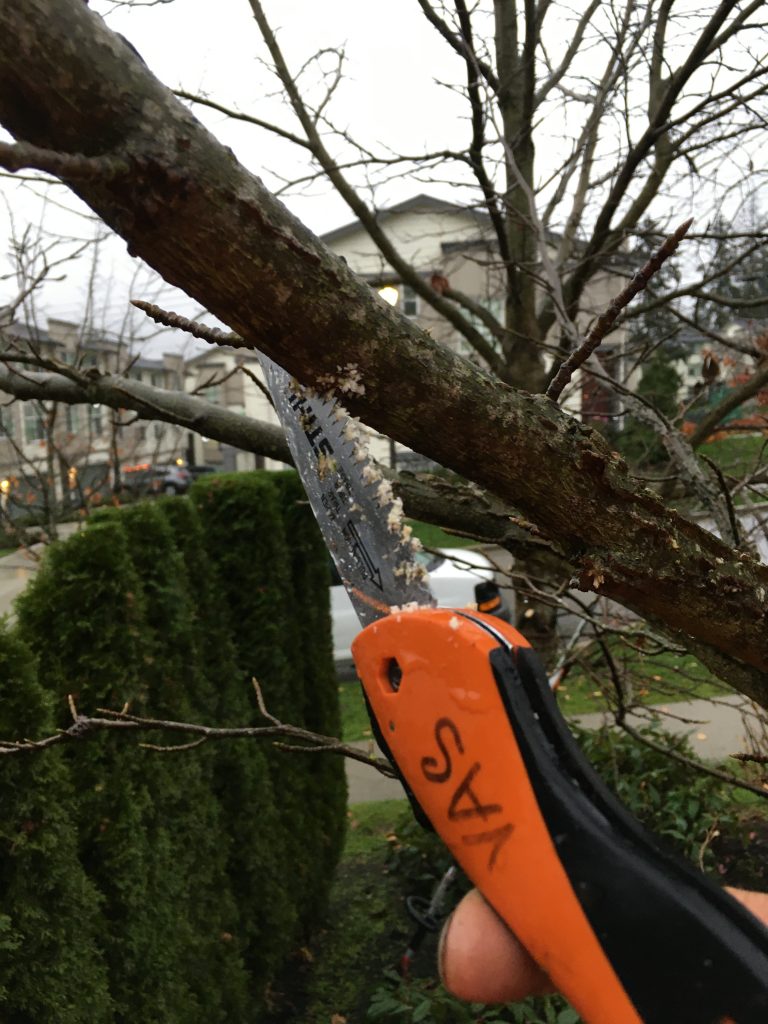
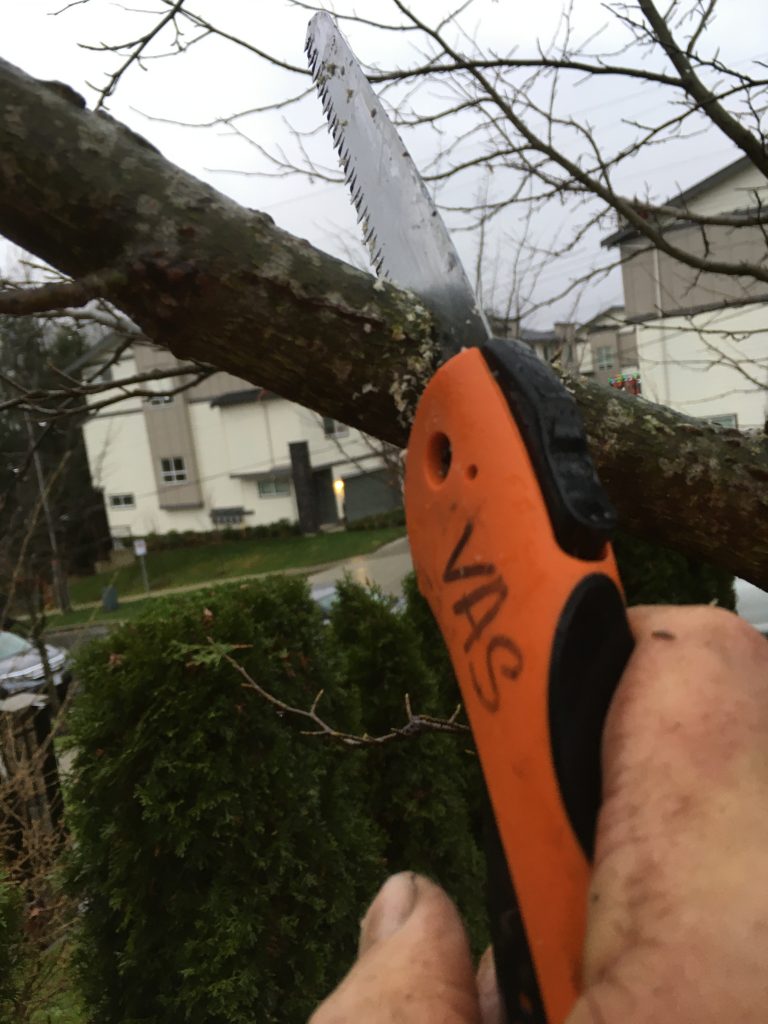

Branches to eliminate
Let’s take a look at some examples of branches I couldn’t tolerate and had to eliminate. When tools are available, I stop what I’m doing and take care of these offending branches right away. Otherwise, people forget and things get worse. Let’s not do that.
Broken branches are an obvious example and should be pruned out immediately. They look awful and there is always the possibility of diseases entering the tree.
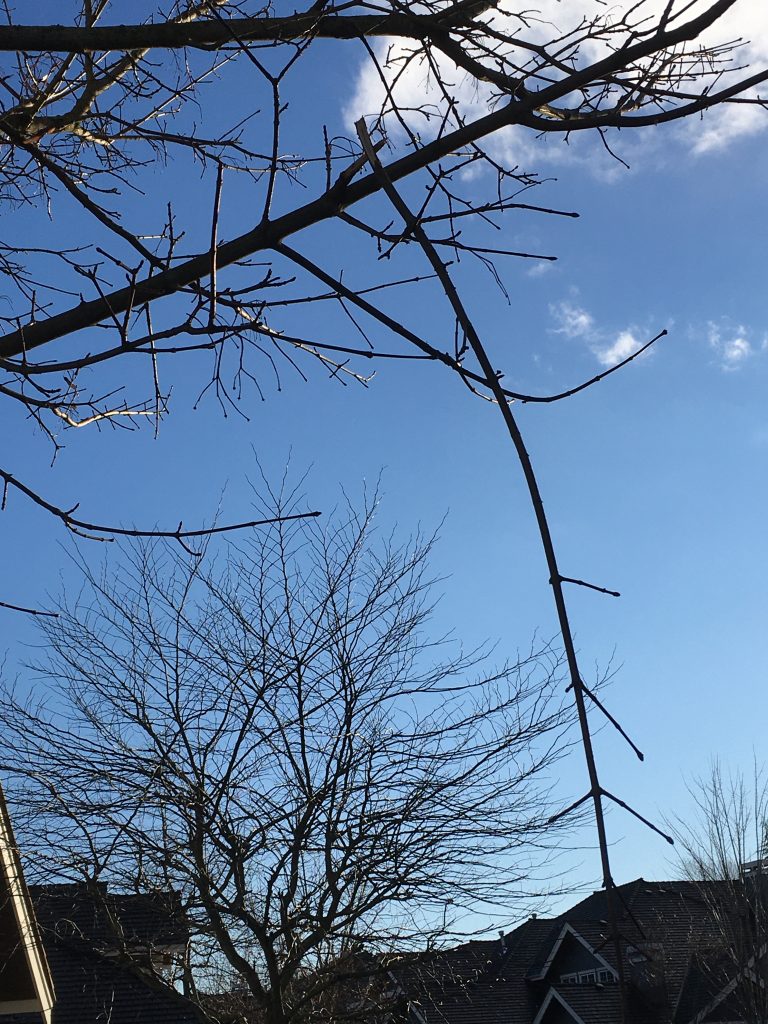
I know, it’s not a huge branch but it looks awful. When I walk by and see this, I’m close to breaking out in a rash. I don’t tolerate broken branches on my trees and neither should you.
I used a pole pruner to remove this branch.
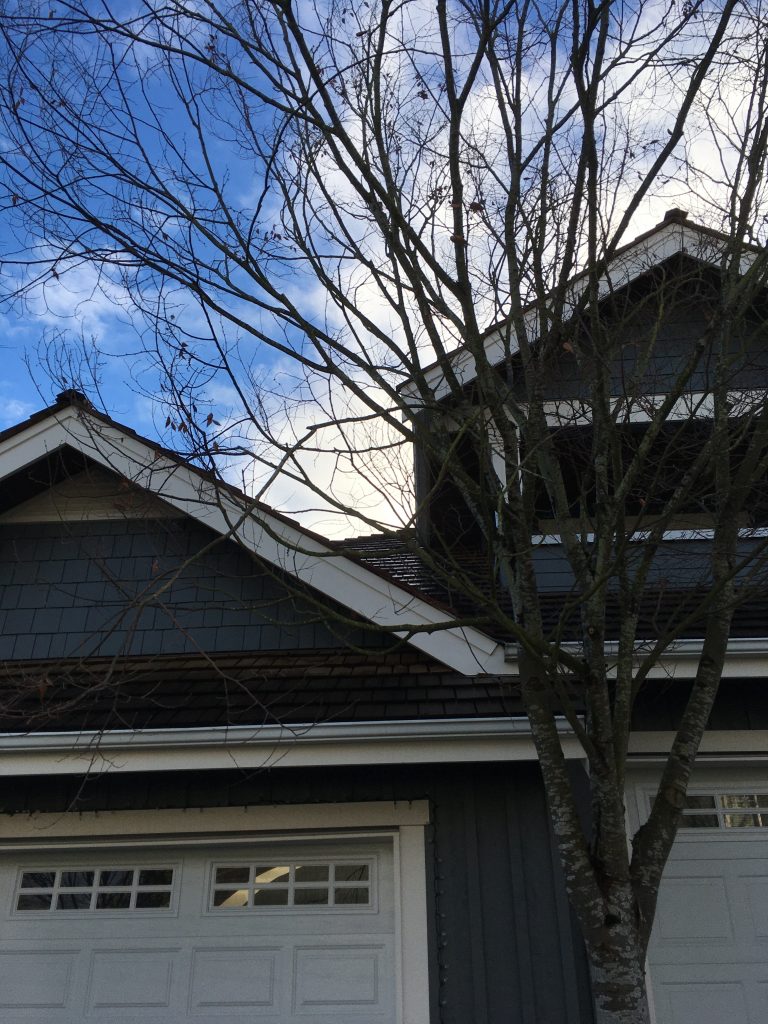
Take a minute to study this picture and find the offending branch. Found it? It’s the branch growing from the middle left down over the garage. Downward pointing branches affect the crown structure so remove them to get a nice looking tree.

This sweetgum (Liquidambar styraciflua) branch had to go since I couldn’t properly access the cedar hedge (Thuja occidentalis) with my power shears. It also runs through the hedge which is a no no, plus it will shade out the hedge. Any branch touching a building gets insurance agents excited. Branches like this have to go.
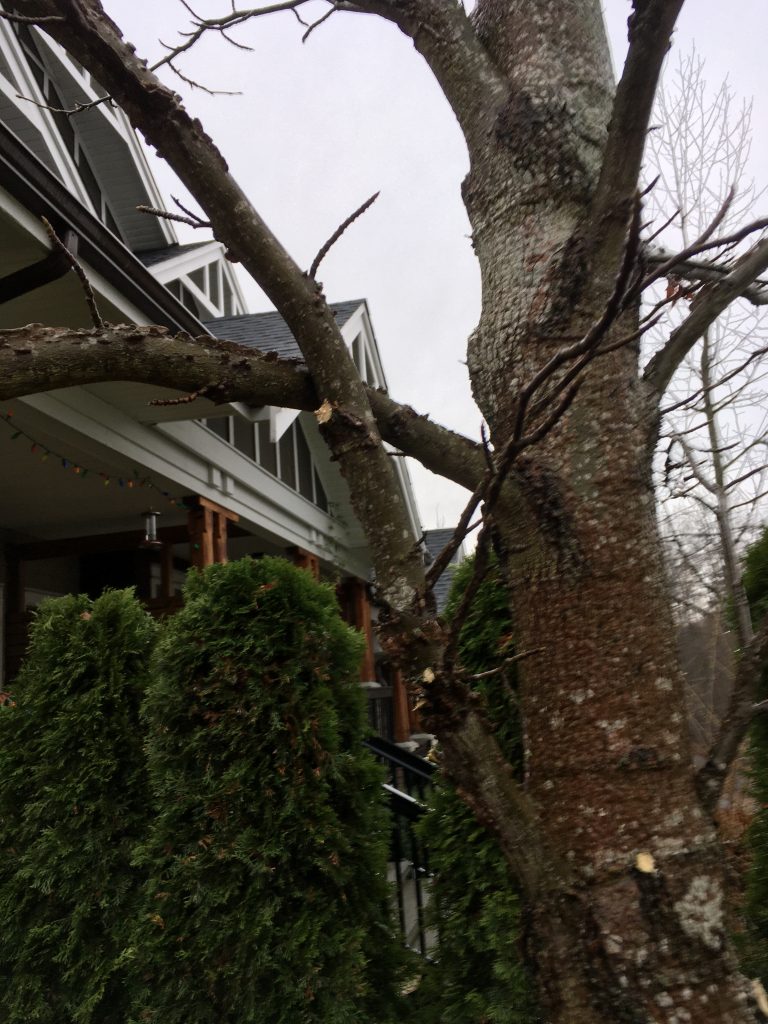
Rubbing branches should also be removed. Here I removed the lower branch because it was growing at a huge angle.
Conclusion
This winter, check over your trees and see if they require any corrective pruning. Eliminate any broken, dead, rubbing, crossing or interfering branches with proper cuts. Unless your branches are very small, always use the three-point cut to prevent bark damage.
Make a few cuts every year for great looking, healthy trees. Call, if you need help!




